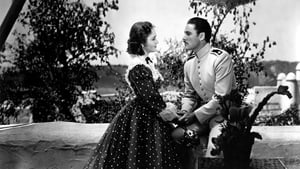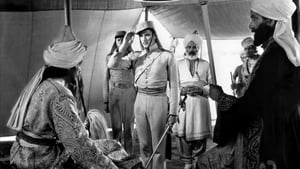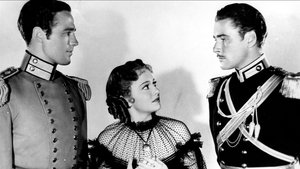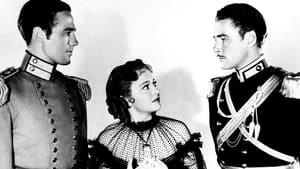Video Sources 0 Views
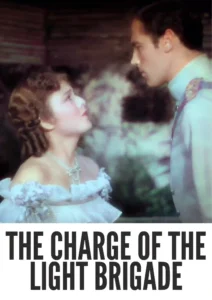
Synopsis
Bravery, Betrayal, and a Doomed Charge: The Charge of the Light Brigade (1936) in Vivid Color

Immerse yourself in the sweeping historical drama of The Charge of the Light Brigade, a swashbuckling adventure classic from 1936, now brilliantly colorized for a spectacular viewing experience. Starring Errol Flynn and Olivia de Havilland, this film, also known as The Charge, delivers a thrilling tale of courage, honor, and sacrifice amidst the backdrop of the Crimean War. Perfect for fans of classic adventure films and historical epics, this HD download brings a timeless story to life with renewed vibrancy.
The Charge of the Light Brigade Storyline: Duty and Destiny
The Charge of the Light Brigade tells the story of Major Geoffrey Vickers (Errol Flynn), an officer in the British Army during the Crimean War. He and his brother, Captain Perry Vickers (Patric Knowles), are stationed in India when a treacherous act by Surat Khan (C. Henry Gordon) leads to a massacre.Driven by a thirst for revenge and a sense of duty, the British brigade is ordered to undertake a daring charge against a heavily fortified Russian artillery position. Despite knowing the mission is suicidal, the soldiers follow their orders with unwavering courage, leading to one of the most famous and tragic events in military history. The film explores themes of honor, loyalty, and the devastating consequences of war, set against a backdrop of stunning landscapes and thrilling battle sequences.
Movie Cast
The film features a stellar cast who bring this epic story to life:
- Errol Flynn as Major Geoffrey Vickers
- Olivia de Havilland as Elsa Campbell
- Patric Knowles as Captain Perry Vickers
- C. Henry Gordon as Surat Khan
- Henry Stephenson as Sir Charles Macefield
Movie Genre
The Charge of the Light Brigade falls into the genre of swashbuckling adventure, with elements of historical drama and war that add depth and complexity to the narrative. Its grand scale, thrilling action sequences, and compelling characters make it a captivating and unforgettable film.
Historical Context: Hollywood’s Golden Age and the Crimean War
Released in 1936, The Charge of the Light Brigade exemplifies the grandeur and spectacle of Hollywood’s Golden Age, showcasing lavish sets, elaborate costumes, and large-scale battle scenes. The film is loosely based on the historical Charge of the Light Brigade, which occurred during the Battle of Balaclava in 1854, during the Crimean War. While the film takes liberties with historical accuracy, it captures the spirit of the event and explores themes of British imperialism and military honor.
Colorization Details
This colorized version of The Charge of the Light Brigade has been meticulously restored using modern digital techniques, enhancing the visual appeal while preserving the film’s original grandeur. The colorization process involved carefully analyzing the grayscale tones of the original black and white footage and assigning appropriate colors to each scene. This painstaking process brings new life to the characters and settings, making the story even more engaging for modern audiences. While some may debate the merits of colorizing classic films, it introduces these films to a broader audience, ensuring their legacy for future generations.
Technical Details
- Director: Michael Curtiz
- Screenplay: Michel Jacoby, Rowland Leigh
- Story: Michael Jacoby
- Cinematography: Sol Polito
- Edited by: George Amy
- Production Company: Warner Bros. Pictures
- Distributed by: Warner Bros. Pictures
- Runtime: 115 minutes
Technical Specifications
- Download Format: MP4
- Resolution: HD (1080p)
- Compatibility: Compatible with most devices, including smartphones, tablets, computers, and smart TVs.
Reviews and Critical Reception
The Charge of the Light Brigade (1936) is celebrated for its spectacular battle sequences, stirring performances, and grand cinematic scope. While the film has been criticized for its historical inaccuracies and portrayal of certain events, it remains a powerful and entertaining example of classic Hollywood filmmaking. As a thrilling adventure epic, The Charge of the Light Brigade continues to captivate audiences with its timeless themes of courage, honor, and sacrifice.
FAQs
- Q: What is The Charge of the Light Brigade about?
- A: The Charge of the Light Brigade is a historical adventure film about a British brigade’s daring charge during the Crimean War.
- Q: Is The Charge of the Light Brigade (1936) historically accurate?
- A: While inspired by historical events, the film takes liberties with historical accuracy for dramatic effect.
- Q: Is this version of The Charge of the Light Brigade colorized?
- A: Yes, this version has been professionally colorized to enhance the viewing experience.
- Q: What makes The Charge of the Light Brigade a classic film?
- A: Its grand scale, thrilling action sequences, and timeless themes of courage and sacrifice.
- Q: What is the download format?
- A: The download format is MP4, which is compatible with most devices.
- Q: What resolution is the download?
- A: The resolution is HD (1080p), providing a high-quality viewing experience.
Download Now in HD!
Watch The Charge of the Light Brigade Today!
